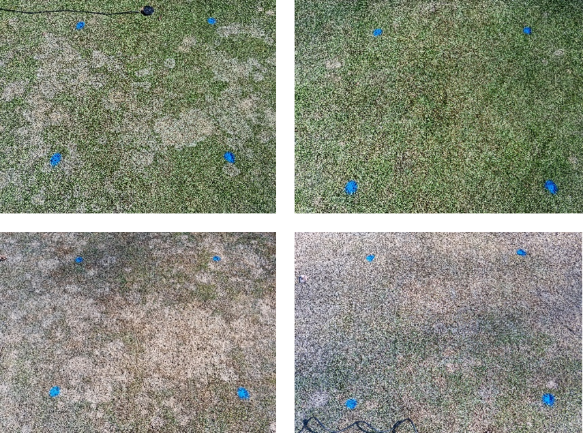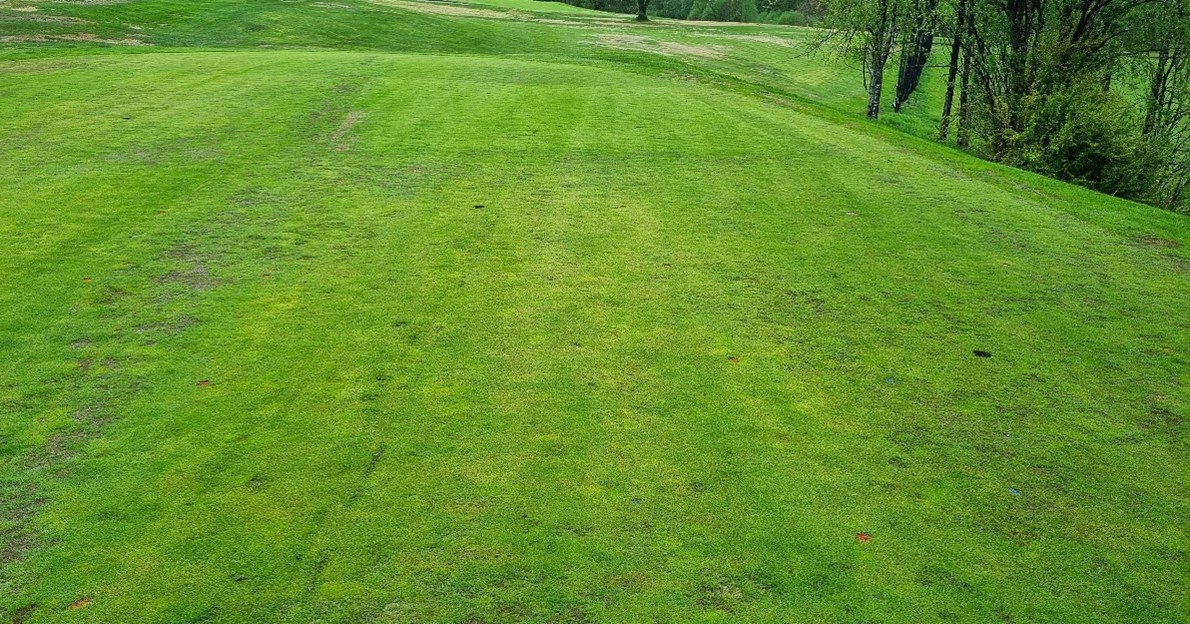By Trygve S. Aamlid1, Jørgen Hornslien1, Trond Pettersen1 and Guttorm Tuxen2,
1NIBIO Turfgrass Research Group, Norway, 2Bærum Golf Course, Norway
In December 2022, we wrote about two newly initiated Norwegian trials investigating if greens that are going to be covered with plastic as a protection against ice and water damage during the winter require a different fungicide program compared with uncovered greens. We now have results showing that there is no difference in fungicide requirements depending on whether greens are covered or not.

The trials were carried out on an almost pure Poa green at NIBIO Landvik Turfgrass Research Center on the Norwegian south coast and on a mixed (50/50) Poa/bentgrass green at Bærum GC close to Oslo. The periods with plastic coverage were from November 30 to March 21 (110 days) at Landvik and from November 17 to April 21 (154 days) at Bærum. Black and white plastic sheets with the white side up were used at Landvik and transparent sheets at Bærum, both installed without a ventilation system but with an undercover of permeable tarp to avoid the plastic from freezing to the grass. Sensors installed in the thatch layer recorded oxygen concentrations at Bærum that went down to 5% and <1% on uncovered and plastic-covered greens, respectively, but snow molds (both Microdochium nivale and Typhula spp.) developed on unsprayed plot regardless of these concentrations (Figure 1). The entire experiment at Bærum was covered with 20-50 cm snow on top of a 2-10 cm ice layer during most of the winter, and recovery after snow and ice melt was faster on plots with an impermeable plastic sheet between the ice and the grass (Figure 2).

In conclusion, these results suggest there is no reason for superintendents to change their fungicide program if they decide to cover their greens before winter. In Norway, two or three applications are usually recommended, the first with one of the systemic products Delaro (prothioconazole + trifloxystobin) or Ascernity (difenoconazole + bensovindiflupyrin) in late September or early October, the second with the contact product Medallion TL (fludioxonil) about three weeks later (after the last seasonal mowing) and the third (if necessary) also with Medallion shortly before coverage. For covered and uncovered plots on the pure Poa green at Landvik, Delaro only, Delaro + Medallion and Delaro + Medallion + Medallion reduced microdochum patch in the early spring by, on average, 60, 90 and 93% relative to the unsprayed control treatment. This is in close agreement with earlier Scandinavian results (Aamlid et al. 2015) and shows that more than two applications may be hard to justify on golf courses that are under pressure to reduce their total pesticide use.
Reference
Aamlid, T.S., W.M. Waalen & T. Espevig, 2015. Fungicide strategies for the control of turfgrass winter diseases. Acta Agriculturae Scandinavica, Section B — Soil & Plant Science 65: 161-169.
https://www.tandfonline.com/doi/full/10.1080/09064710.2014.985249